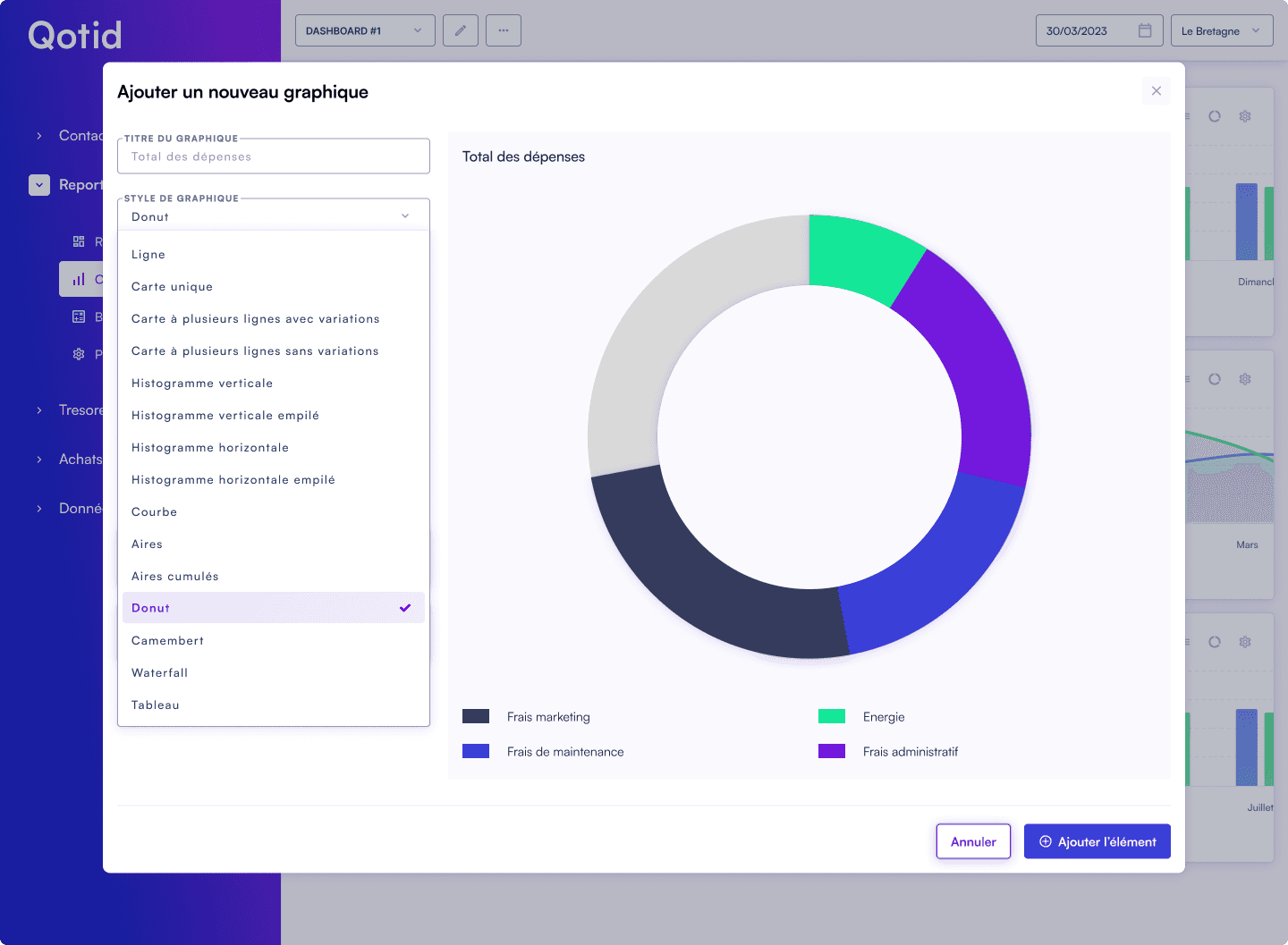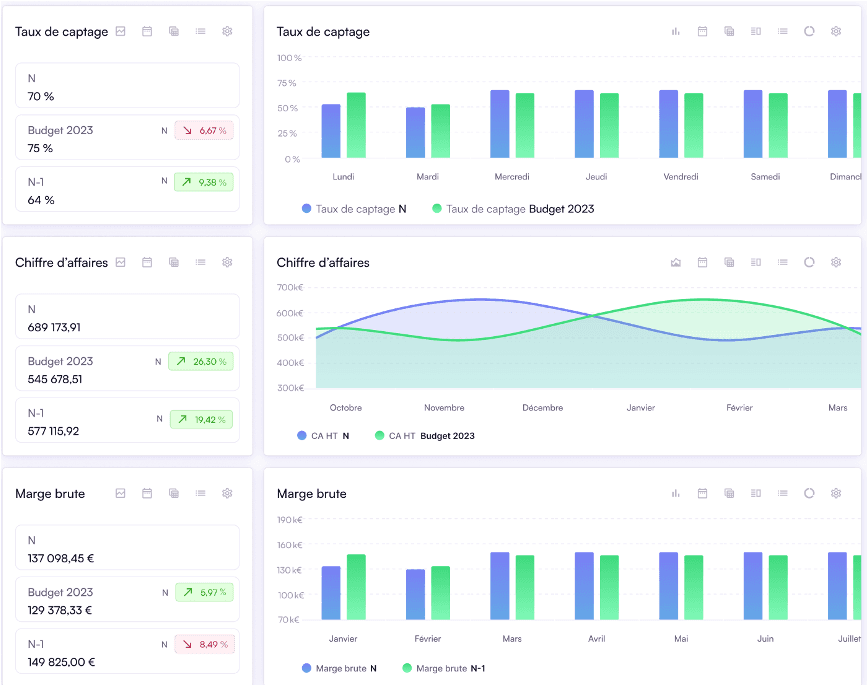What is reporting? (2024)
lucas-fontaine
•
Jul 8, 2024
The reporting is a tool often used in businesses!
Today, all strategic decisions are based on data, and no one can question the usefulness of reporting as a decision-making tool.
So, what exactly is reporting? Can this tool be used in all companies and across all sectors? What are the best practices for optimal performance analysis? These are all the questions we will try to answer together.
The definition of reporting
Reporting can be defined in one sentence: “reporting is the activity of periodically reporting one's performance to management.” Overall, reporting is a tool that allows for the communication of data in the form of reports on the activities and results of the business.
It contains real data such as revenue figures, your number of clients, details about your expense items (electricity, administrative costs, etc.), and performance indicators (also called KPIs). This data will have been collected from one or more sources of information (notably business software) and sorted to be made available to managers in dashboards that are readable and understandable by all employees of the company.

Who establishes the reporting?
It depends on the type of reporting as well as the size and structure of the business.
Most of the time, for financial reporting (overall performance of the company), it is the finance and accounting teams that are responsible for collecting, analyzing, and presenting the company's or group's financial information.
These professionals aim to convert this data into clear and understandable results and insights for internal and external stakeholders.
However, reporting is not limited to just the finance teams.
Various players can collaborate, including department heads who can also provide specific information about their areas of expertise.
Who is the reporting aimed at?
Reporting is aimed at both internal and external stakeholders.
👉 Internally, the main recipients of reporting are often the executives and senior managers of the company, as well as the heads of each department.
👉 Externally, shareholders and investors are key stakeholders, as they rely on financial reports to assess the financial health of the company, its profitability, and its potential value as an investment.
It can also include business partners or even clients (for transparency purposes).
In summary, reporting aims to provide clear and relevant information to all stakeholders involved in managing, investing, or evaluating a company's performance.

What is the purpose of reporting?
The reporting allows for the collection of data from various sources and presents it in the clearest and most visual way possible so that it is ready to be analyzed.
Reporting is thus an intrinsically linked tool to Data Visualization and Data analysis.
Its purpose, as mentioned earlier, is to track performance, communicate data both internally and externally, and analyze it for informed decision-making.
The different types of reporting
Strategic reporting
Strategic reporting concerns dashboards focused on monitoring the company's long-term strategies, analyzing, and comparing a panel of critical information based on market evolution, “global” indicators, and competition.
Tactical reporting
It is a reporting rich in information that focuses more on the operational side and the implementation of specific initiatives.
This allows middle managers to evaluate project progress, the strengths and weaknesses of the concerned teams, or at least the obstacles they encounter.
Client reporting
Client reporting aims to maintain the client-company relationship and show them the fruits of your collaboration.
For example, an agency keeps its client informed via weekly or monthly reporting with the results of the commissioned project.
Operational reporting
Operational reporting allows for the monitoring, measuring, and managing of operations within a relatively short time frame. This type of reporting can include reports on sales, the performance of a particular product or project, logistics, etc.
Operational reporting facilitates quick decision-making and process optimization.
Analytical reporting
These particular dashboards contain numerous data sources that allow analysts to explore and extract information based on trends and forecasts to help the business make decisions.
Generally speaking, the reporting required in a business concerns one of the areas of the famous balanced scorecard by Norton & Kaplan: Finance / customers / internal operations / growth & development.
Financial reporting
Of course, financial reporting is essential for properly managing a business. From the simple income statement and forecast balance sheet to financial analysis reporting, management needs to keep an eye on the key figures of the business: profitability, sales, margins, operating expenses, profits, investments and their effects, etc.

CSR reporting (Corporate Social Responsibility)
CSR reporting (Corporate Social Responsibility) allows companies to account for the environmental and social impacts of their activities.
The aim is to analyze this data to find actions to be implemented to mitigate these impacts.
CSR reporting is generally developed with the help of external stakeholders to the company and includes 3 themes: Social, societal, and environmental.
Commercial reporting
Commercial reporting focuses on the business activities (possibly the activities of the client relationship teams as well) of the business.
It allows for the analysis of the performance of sales teams against set objectives and includes indicators based on sales, leads, average cart per order, complaints, performance by geographic area, etc.
Marketing reporting
Marketing reporting allows for measuring the results of advertising campaigns and adjusting spending based on the performance of the channels used.
Among the most commonly used indicators are: return on investment (ROI), lead conversion rates and cost per lead, website traffic, generated sales, email open rates, social media engagement, search engine ranking, etc.

In summary
You will understand that reporting plays a crucial role in managing and evaluating the performance of a business, regardless of the sector. It is even a pillar of modern business management. Reporting can provide both an overview of the activity and a precise follow-up of a specific sector or project.


